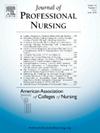Comparing characteristics of underrepresented versus majority student groups enrolled in US nursing programs
IF 2.8
3区 医学
Q1 NURSING
引用次数: 0
Abstract
Background
Health workforce diversity is needed to achieve health equity. However, the 2023 ban on race-conscious admissions could result in reduced access to education for underrepresented students.
Purpose
This study examined enrolled US nursing students' reports of program type and admission characteristics to identify access pathways for underrepresented students.
Methods
A cross-sectional, quantitative design was used, recruiting students currently enrolled in nursing programs through email, social media, and word-of-mouth.
Results
Of 991 nursing students, 58.7 % were non-white. Most (70.2 %) were enrolled in Bachelor of Science in Nursing (BSN) programs, 54.5 % of which were second degree programs. LVN students comprised 13.2 % of the sample. Native American/Alaska Native and Black respondents more frequently reported attending second degree nursing programs and Historically Black Colleges and Universities. They also more frequently reported attending programs that had no prerequisites or grade point average requirements at admission.
Conclusions
The findings suggest that second degree programs could provide a more viable pathway for underrepresented students to access nursing education after obtaining a bachelor's degree in another field compared to traditional BSN programs. Recommendations to reduce barriers are discussed.
比较就读于美国护理专业的少数学生群体与多数学生群体的特点
背景要实现卫生公平,就需要卫生工作者的多样性。然而,2023 年的种族意识招生禁令可能会导致代表性不足的学生接受教育的机会减少。本研究调查了在读美国护理专业学生对课程类型和招生特点的报告,以确定代表性不足的学生接受教育的途径。大多数学生(70.2%)就读于护理学学士(BSN)课程,其中 54.5% 为第二学位课程。LVN 学生占样本的 13.2%。美国原住民/阿拉斯加原住民和黑人受访者更多地表示就读于第二学位护理课程和历史悠久的黑人学院和大学。结论研究结果表明,与传统的 BSN 课程相比,第二学位课程可以为代表人数不足的学生在获得其他领域的学士学位后接受护理教育提供更可行的途径。本文还讨论了减少障碍的建议。
本文章由计算机程序翻译,如有差异,请以英文原文为准。
求助全文
约1分钟内获得全文
求助全文
来源期刊
CiteScore
4.80
自引率
8.00%
发文量
153
审稿时长
52 days
期刊介绍:
The Journal will accept articles that focus on baccalaureate and higher degree nursing education, educational research, policy related to education, and education and practice partnerships. Reports of original work, research, reviews, insightful descriptions, and policy papers focusing on baccalaureate and graduate nursing education will be published.

 求助内容:
求助内容: 应助结果提醒方式:
应助结果提醒方式:


